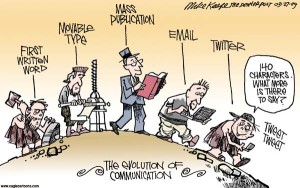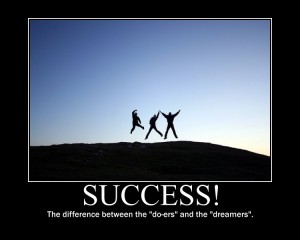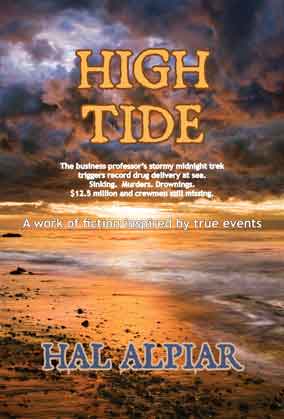Oct 13 2015
DAY 27 – 30 Days To The New Economy
Your Role In History As An Entrepreneur
COMMUNICATIONS NETWORK
Adapted from the book 30 DAYS TO THE NEW ECONOMY written and published by Peggy Salvatore
Your communications network needs to be at the very
heart of your business model in the New Economy.
A communications plan with your team and your customers is no longer just a “nice to have.” It is absolutely essential to your survival.
It doesn’t matter whether your products are virtual or physical, you need a full-time communications network in place to keep your business stabilized and viable.
Your communications network is based on your Internet provider but only starts there. Communications includes the platform for communicating, the software that you use, the web of relationships that you have, and your people as well as technical communication skills.
Beyond a reliable Internet connection, you need to be running software that is compatible with everyone else. Most of the web-based communications platforms run for everyone, just about everywhere. And they are easy to use. Your communications platforms need to be universal because building and maintaining productive relationships with customers and team members depends on platform functioning in addition to how you “come across” to others.
It’s best to start with a reliable email service. Then add a service that allows you to deliver large files such as Dropbox, or another file transfer protocol provider. Next, add a team-friendly platform where you can gather everyone for face-to-face virtual meetings (e.g., Skype, Go To Meeting, etc.). Finally, you’ll want to layer any number of software programs that enhance your experience, and set to work honing your personal listening and presentation skills.
In concert with developing your email, messaging and meeting services, social platforms, and personal communication skill platforms, you’ll need to be thinking about how to be–or have someone close to you be–a centralized axis for keeping all those around you in the strategical planning and tactical action steps loop.
Even if you are technically savvy, expect to have a technical support person or three at your disposal. If you have someone whose job it is to manage the technical communications issues upon which your Internet business relies, it frees you to concentrate on the pieces that you can’t replicate which is all the value that your specialty brings to the marketplace.
I am always impressed and amazed at the stories of entrepreneurs who dedicated nights, weekends and months to mastering communications platforms to build their business. But at some point, sooner rather than later as revenue arrives, it is a good idea to liberate yourself from maintaining the networks upon which your business depends and put that into professional hands.
Your ability to communicate with your customers and your staff is the lifeblood of your business in the New Economy.
You cannot afford to jeopardize your customer communications flow and consistency simply to save a few dollars, or because you think that you can do it well enough. “Well enough” isn’t good enough as you become a bigger player, even a marginally bigger player (unless you’re just faking it)!
Put your money into development of an ongoing communications platform as one of your first investments. It is one investment that can make the difference between life and death for your business. Remember: HEARING IS NOT LISTENING!
# # #
C’mon back WEDNESDAY 10/14 for Day 28 —
What’s your plan for keeping sharp and tuned in? You’ll need more than a grinder and a radio.
# # #
SPECIAL A N N O U N C E M E N T
Sign up NOW for NOVEMBER 29th (Sunday Night after Thanksgiving)
LIMITED SEATING COACHING WEBINAR:
“ENTREPRENEURS ARE AGENTS OF CHANGE . . . Accelerating Your Business”
Get fresh, informed, proven insights geared specifically to your business market, your biggest problems, your biggest opportunities.
With Hal and Peggy’s wealth of business coaching experience, you’ll learn how YOU match up with what successful entrepreneurs are thinking and doing RIGHT NOW. Get ideas you never imagined. Gain the traction you need within 2 hours — not days or weeks or months. Simply call 931.854.0474 Central Time: 11AM to 4PM Monday-Friday for details, to explain your business pursuit focus and to reserve your seat! $99 total for 2 hours. Satisfaction Guaranteed.
———-
For more information on Peggy Salvatore’s book: 30 Days to the New Economy [© Peggy Salvatore 2015. All Rights Reserved.] click on ENTREPRENEUR NEWS or visit ow.ly/RysnP for the E-book
# # #
Hal@Businessworks.US Peggy@Businessworks.US
Open Minds Open Doors
Thanks for your visit and make today a GREAT day for someone!











